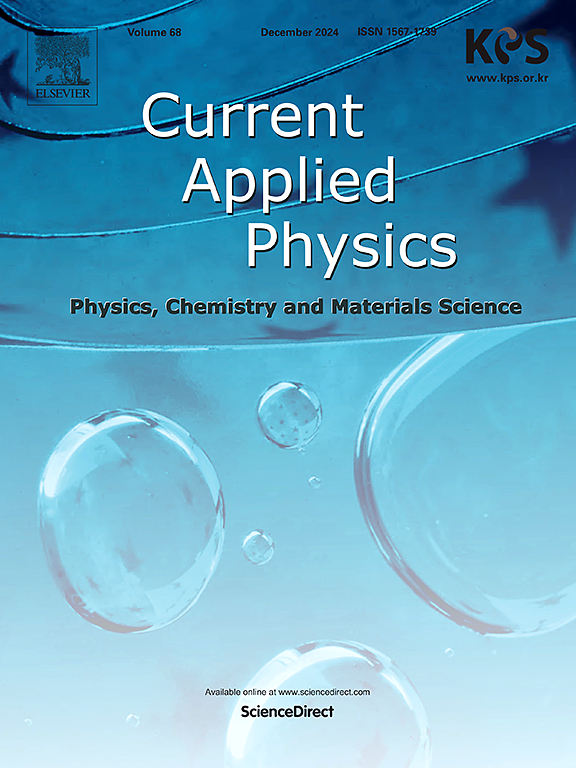Enhancements of luminescence properties of Gd3+-sensitized perovskite CaZrO3:Eu3+ phosphors
IF 3.1
4区 物理与天体物理
Q3 MATERIALS SCIENCE, MULTIDISCIPLINARY
引用次数: 0
Abstract
A novel perovskite phosphor CaZrO3 co-doped with Eu3+ and Gd3+ ions was prepared by a high-energy deformation process. The structures, morphologies, compositions, and photoluminescence properties of the materials were systematically measured and studied. The X-ray diffraction patterns showed an orthorhombic perovskite crystal structure. The highest excitation peak was observed at 394 nm, which is in good agreement with the near-UV chips. The prepared phosphors excited by near-UV 394 nm light exhibit narrow-band red emission dominated by the 5D0 → 7F2 transition of Eu3+, which peaked at 614 nm. The optimum concentration of Gd3+ in the CaZrO3: Eu3+, Gd3+ phosphor was 2 mol%, above which concentration quenching was observed. According to the results of the luminescence properties, the prepared phosphor materials have potential as efficient candidates for near-UV and blue light-emitting diode chips and as efficient components for the manufacture of white light-emitting diodes.

Gd3+敏化钙钛矿CaZrO3:Eu3+荧光粉发光性能的增强
采用高能变形法制备了Eu3+和Gd3+共掺杂的新型钙钛矿荧光粉CaZrO3。系统地测量和研究了材料的结构、形态、组成和光致发光性能。x射线衍射图显示为正交钙钛矿晶体结构。在394 nm处观察到最高的激发峰,这与近紫外芯片的结果一致。在近紫外394 nm光激发下制备的荧光粉表现出以Eu3+的5D0→7F2跃迁为主的窄带红色发射,在614 nm处达到峰值。在CaZrO3: Eu3+, Gd3+荧光粉中,Gd3+的最佳浓度为2 mol%,超过该浓度会出现浓度猝灭现象。根据发光性能的结果,所制备的荧光粉材料具有作为近紫外和蓝光发光二极管芯片的有效候选材料和制造白光发光二极管的有效元件的潜力。
本文章由计算机程序翻译,如有差异,请以英文原文为准。
求助全文
约1分钟内获得全文
求助全文
来源期刊

Current Applied Physics
物理-材料科学:综合
CiteScore
4.80
自引率
0.00%
发文量
213
审稿时长
33 days
期刊介绍:
Current Applied Physics (Curr. Appl. Phys.) is a monthly published international journal covering all the fields of applied science investigating the physics of the advanced materials for future applications.
Other areas covered: Experimental and theoretical aspects of advanced materials and devices dealing with synthesis or structural chemistry, physical and electronic properties, photonics, engineering applications, and uniquely pertinent measurement or analytical techniques.
Current Applied Physics, published since 2001, covers physics, chemistry and materials science, including bio-materials, with their engineering aspects. It is a truly interdisciplinary journal opening a forum for scientists of all related fields, a unique point of the journal discriminating it from other worldwide and/or Pacific Rim applied physics journals.
Regular research papers, letters and review articles with contents meeting the scope of the journal will be considered for publication after peer review.
The Journal is owned by the Korean Physical Society.
 求助内容:
求助内容: 应助结果提醒方式:
应助结果提醒方式:


